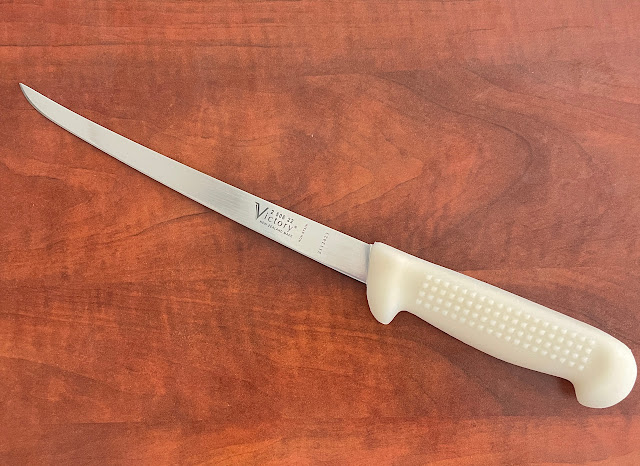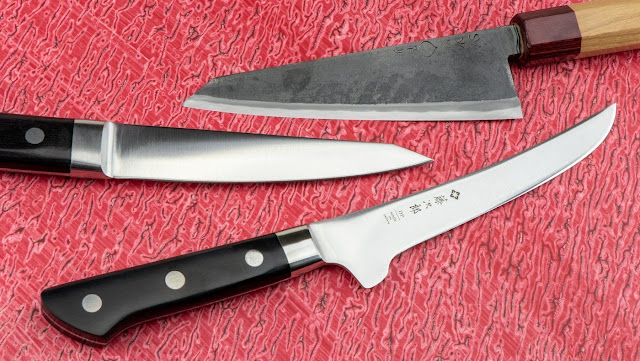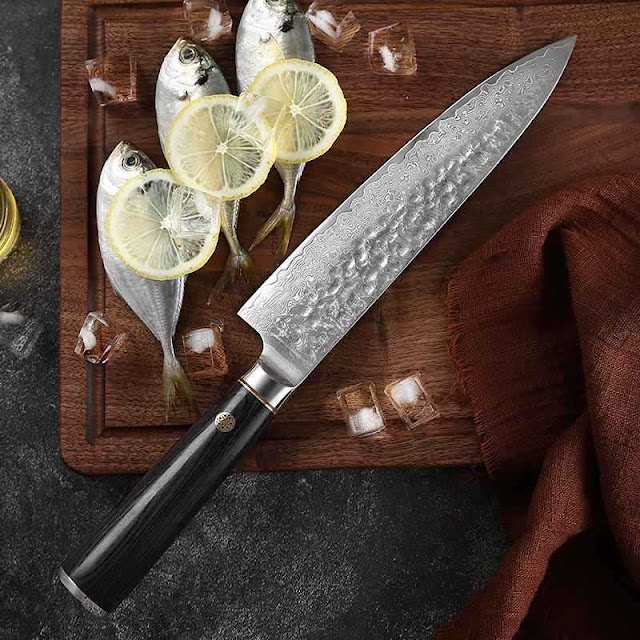Unveiling the Artistry of Filleting Knives: A Cut Above the Rest
In the world of culinary craftsmanship, precision is paramount, and no tool exemplifies this better than the filleting knife. Designed with finesse and functionality in mind, the filleting knife is a culinary marvel that elevates the art of filleting fish and meat to new heights. As we delve into the intricacies of this indispensable kitchen companion, prepare to uncover its unique features, versatile applications, and the mastery it brings to the table.
The Anatomy of a Filleting Knife:
At first glance, a filleting knife may seem like any other kitchen blade, but upon closer inspection, its design reveals a purpose-built construction tailored for the delicate task of filleting. With a long, slender blade typically ranging from 6 to 9 inches, the filleting knife boasts a flexible and razor-sharp edge that effortlessly glides through flesh and bone, ensuring clean and precise cuts. Its ergonomic handle provides a comfortable grip and optimal control, allowing chefs to maneuver with finesse and confidence.
Precision in Motion:
Filleting is an art form that demands precision and skill, and the filleting knife is the maestro's instrument of choice. Whether deboning a fish or trimming meat with surgical precision, this specialized blade excels in executing intricate cuts with minimal waste. Its flexibility enables seamless maneuverability around bones and joints, while its razor-sharp edge effortlessly separates flesh from skin, yielding pristine fillets that showcase the chef's mastery and attention to detail.
Versatility Redefined:
While the filleting knife is synonymous with its namesake task, its versatility extends far beyond filleting alone. This multifaceted blade proves indispensable in a myriad of culinary applications, from slicing delicate fruits and vegetables to trimming fat and carving poultry. Its slender profile and precision blade make it ideal for tasks that demand finesse and accuracy, earning it a coveted place in both professional kitchens and home cook's arsenal of tools.
Choosing the Perfect Blade:
Selecting the right filleting knife is essential to achieving culinary excellence, and several factors should be considered when making your choice. Blade material, edge retention, and handle comfort are among the key considerations that influence performance and longevity. High-carbon stainless steel blades offer durability and corrosion resistance, while ergonomic handles enhance comfort and control during prolonged use. By investing in a quality filleting knife that aligns with your culinary needs, you unlock the potential to elevate your cooking to new heights.
Caring for Your Culinary Companion:
To ensure your filleting knife remains a steadfast companion in your culinary endeavors, proper care and maintenance are essential. Regular sharpening and honing preserve the blade's sharpness and edge retention, while hand washing and thorough drying prevent corrosion and prolong the knife's lifespan. Additionally, storing the knife in a protective sheath or knife block safeguards against damage and maintains its pristine condition for years to come.
Conclusion:
In the realm of culinary arts, precision and mastery reign supreme, and the filleting knife stands as a testament to the craftsmanship and dedication of chefs worldwide. With its razor-sharp edge, flexible blade, and versatile applications, this culinary marvel embodies the artistry and finesse required to transform ingredients into culinary masterpieces. By embracing the artistry of filleting knives and harnessing their unparalleled precision, chefs and home cooks alike can embark on a journey of culinary excellence that transcends the ordinary and celebrates the extraordinary.




Comments
Post a Comment